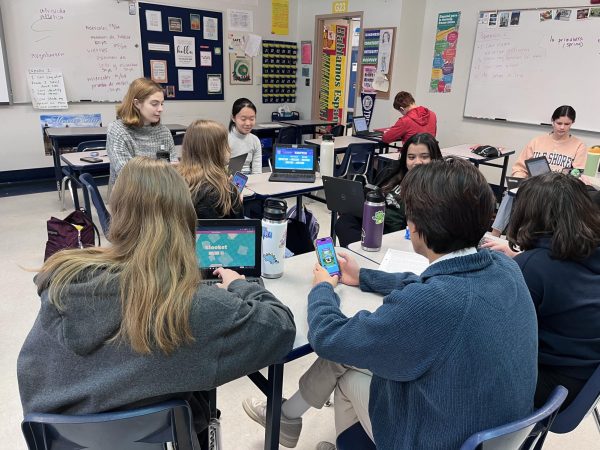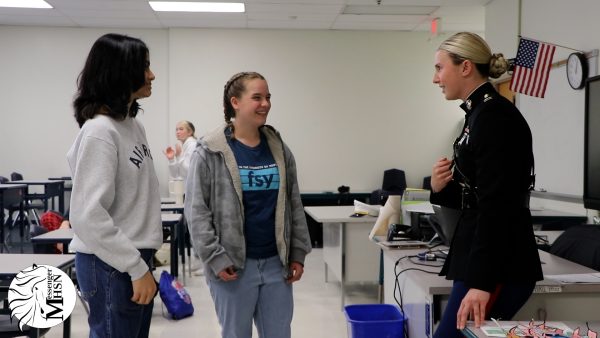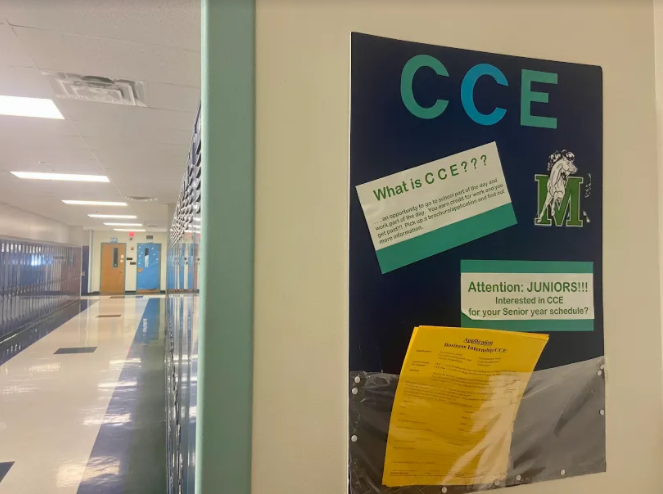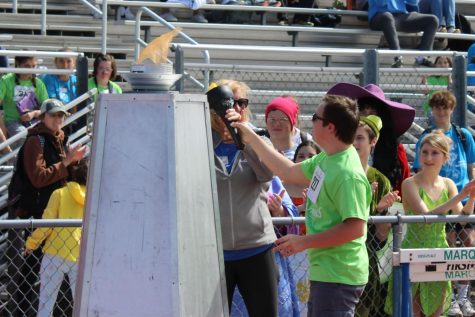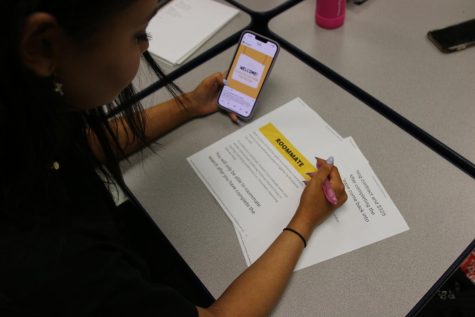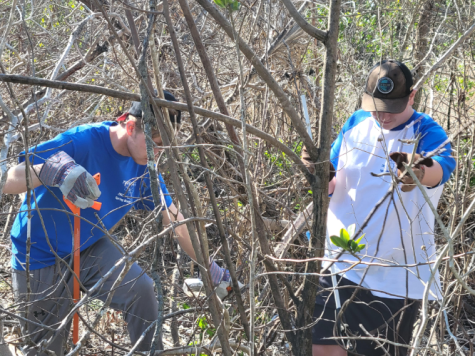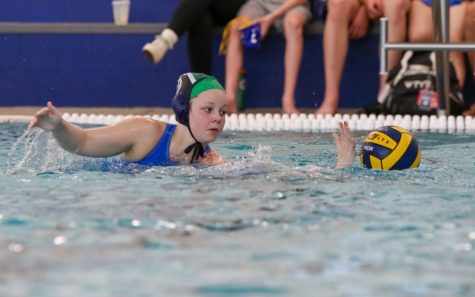CCE Program Participation Remains Low, Despite Many Opportunities
Media by Parker Brandt
The CCE program is directed by Scott Sissom, who has this board posted outside his office. The program’s student participation has remained low, despite the various opportunities and options it has for students looking to kickstart their career or learn about work-life balance.
Selma Hotich, senior, has always known the traditional 7-hour school day wasn’t for her.
She found out about Cooperative Career Education (CCE), a program that allows students to circumvent the traditional school day schedule to incorporate their employment. The goal is to help prepare and acclimate students for entering the workforce while still participating in and valuing their education.
Hotich found out about the program when she was a sophomore through a senior friend. She works at Boardwalk Pizza on Manchester Road, and says a few of the people she works with go to MHS and are in CCE.
With the flexible hours, Hotich decided to exempt her first, sixth and seventh hours. On a standard A-Day, Hotich comes in at 9:18 a.m. and leaves at 1:37 p.m. She also chose to opt out of Ac-Lab, allowing her to leave at 12:05 p.m. on a standard B-Day.
“After I heard about it, I knew it was something I definitely wanted to be a part of when I became a senior,” Hotich said.
Scott Sissom, CCE coordinator, works with a small group of students per year, typically ranging from 40-48 students at a time. Students have a variety of jobs, some more career-focused such as working for a real estate company or a dental office, others in retail or fast food.
“For some students, it might just be getting general work experience,” Sissom said. “But for others, it will lead to their career.”
Sissom said the program’s focus is to not only teach students and young adults about how to manage work and school simultaneously, but also to give them the tools they may need later in life to pursue a successful career.
Two versions of the program exist: CCE and CCE+. How many hours a student works per week and differing GPA requirements for each program determines which of them a student falls into, and how many hours of school per day they are allotted to leave and go to work.
“Some students might work just weekends, others will go during or immediately after school and work until 5 or 6 if they’re in a more professional environment,” Sissom said. “Some even work late evenings, as late as 11.”
Students are required to maintain certain aspects of their education and employment to remain in the program. They cannot be fired or quit their job for the semester, must have a good disciplinary record and have good attendance.
Lauren Argo, senior, is also a student in the CCE program, but only joined the second semester of her senior year. She works at Fisher’s Sports where she also gets all her gear for playing softball.
“I have met all the guys that have worked there, so when I went to go get a job they all knew me and I didn’t have to do an interview,” Argo said.
Argo said the program changed her school and work schedule a lot, and that she usually works four to five days a week for three to seven hour shifts. She said the program has helped her learn about time management and how to prioritize school rather than procrastinating as well as how to manage work on top of that.
“Now when I get homework, I do it right away. I don’t wait until the day of,” Argo said. “It has also benefited me mentally because of my time management skills. I don’t have to worry about my homework being done or getting projects done.”
Your donation will support the student journalists of Marquette High School. Your contribution will allow us to purchase equipment and cover our annual website hosting costs. You may become a PATRON by making a donation at one of these levels: White/$30, Green/$50, Blue/$100. Patron names will be published in the print newsmagazine, on the website and once per quarter on our social media accounts.

Parker Brandt, senior, is the Features editor for her second year on staff. She wants to major in journalism in college and is excited for another school...




